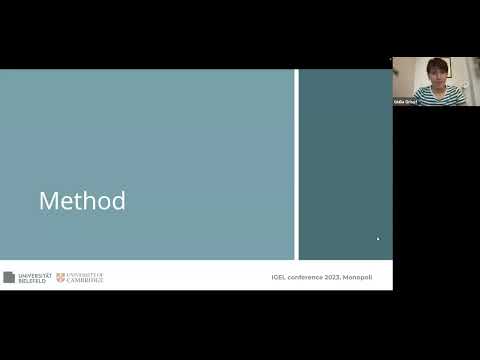 Speakers: Giulia Grisot @giulia.grisot, Berenike Herrmann
Speakers: Giulia Grisot @giulia.grisot, Berenike Herrmann
 Affiliation: University of Cambridge, Bielefeld University
Affiliation: University of Cambridge, Bielefeld University
Title: Is Heidi really happier in the mountains? A computational study of fictional space and emotion
Abstract (long version below): In the current paper we investigate empirically the assumed dualism between the represented rural/natural and urban space in Johanna Spyri’s novel ‘Heidi’. Firstly, we use a distant reading approach to test a prominence of natural and rural space in comparison to urban ones in the novel, compared to a reference corpus of Swiss literary texts written in the same period around 1900. Secondly, using (and thus validating) a sentiment lexicon approach, we examine the polarisation of ‘positive’ and ‘negative’ that we expect to see – based on theoretical assumptions – in relation to the landscapes depicted in the novel.

 Long abstract
Long abstract
Heidi is an iconic and representative character for the Swiss nation, and arguably the most famous Swiss personality. The incredible success of the 1880 novel Heidi: Lehr und Wanderhjahre by Johanna Spyri – and of Heidi as a character in particular – became even more contagious after the broadcasting of the well-known Japanese animated series in the 70s, and of several film adaptations over the decades. But what brought Heidi to success in the first place? One key element is that Spyri’s novel reassuringly simplifies reality, creating a world made of neat polarisations: characters are either good or bad, simple peasant food is opposed to the exceedingly refined delicacies in Frankfurt, and – crucially – the mountain, with its open horizons and the idyllic nature it represents, is put in direct contrast with the city and its enclosed and claustrophobic urban spaces. In short, the ‘good’ rural life is opposed to ‘negative’ urbanisation, and all this entails.
Throughout Spyri’s novel, the mountain in particular becomes a therapeutic, healing space, which emphasises the romantic myth of Switzerland as an ‘enchanted’, uncontaminated space – an idea introduced in Swiss literature by Albrech von Haller in his Alpen. Within this conceptualisation of reality, the ‘return’ to a natural and rural life becomes and ideal and a synonym of labour and virtue, an antidote to urban life, an image which soon became a keystone in the construction of a Swiss national identity.
It is this dualism that we investigate in the current paper, using a distant reading approach to see 1) whether we can detect a prominence of natural and rural space in Heidi, and 2) whether we can observe the polarisation of ‘positive’ and ‘negative’ discussed above in relation to the landscape depicted in the novel – as compared to a reference corpus of Swiss literary texts written in the same period – using a sentiment lexicon approach. We will therewith also examine how the emotions detected computationally reflect our perceptions as readers and literary scholars, using this investigation as a case for a validation of such methods. Using human-annotated sentences from Heidi, we will present a qualitative comparison of specific and ‘extreme’ cases (sentences) where human annotators and automated sentiment values present a notable difference.
To investigate the dualism between rural/natural and urban space in Heidi, we first created a comprehensive dictionary of spatial terms, describing either rural/natural or urban environments (see Grisot 2023), and performed a ‘search’ for these terms in our corpus. Secondly, we performed an analysis of the sentiment encoded in sentences that contain such spatial terms, using the lexicon version of SentiArt (Jacobs 2019), specifically the AAPz measure provided, which we used as a measure of valence – i.e. how positive/negative a word is. Finally, we compared the sentiment detected with SentiArt with manual annotations, analysing closely cases where the human and the automatic annotation differ, and trying find a rationale behind such cases.
Our results showed that Heidi pushes the urban/rural dualism further than the comparison corpus, with a higher presence of rural and natural terms than urban ones, and a significant difference in how sentences containing rural and natural terms are encoded affectively (more positively), in comparison to those containing urban spatial terms (more negatively).
The performance of the SentiArt AAPz value was also tested in our study, and proved a reliable tool for the detection of valence: the AAPz value had a positive significant correlation with the valence annotated manually by six trained annotators, and when plotted into an emotional curve over the novel, both values appeared clearly in line with the sentiment expected from the plot, as well as from the presence of space: a rather happy beginning (Heidi arrives in the mountains), followed by a darker phase (Heidi is sent to Frankfurt), reacquiring a positive encoding towards the last third of the novel (Heidi returns to the alpine pasture.

